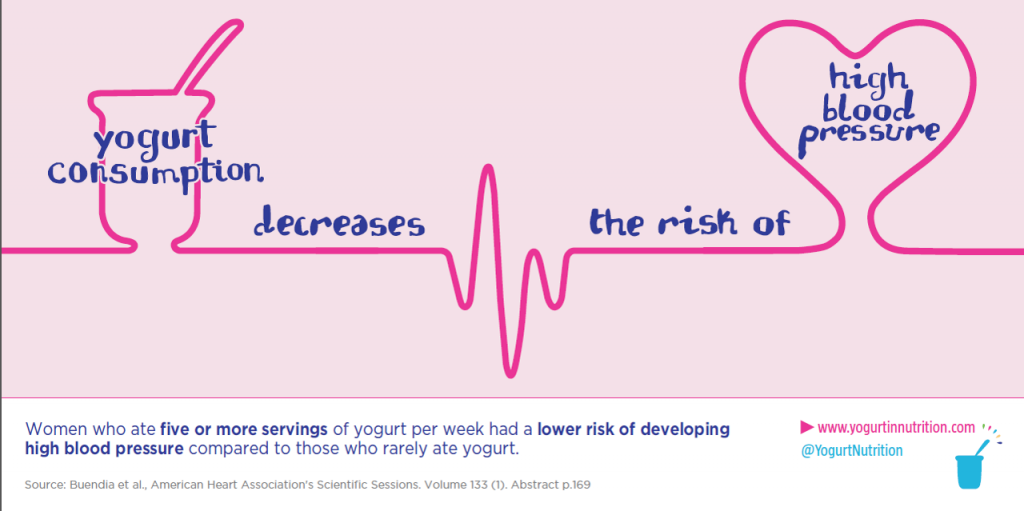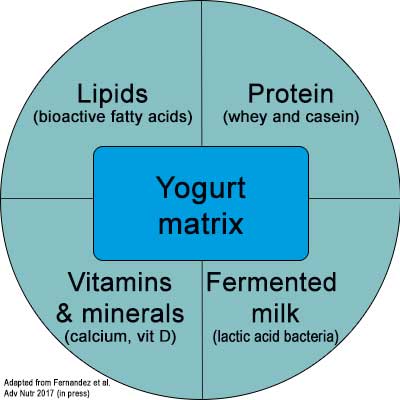The last YINI summit “Yogurt, more than the sum of its parts” was held in Boston on 10th June 2018 as part of Nutrition 2018. This scientific symposium gathered together renowned nutrition scientists to discuss the role of the yogurt dairy matrix. Charlotte Debeugny reports for us the presentation made by Pr Arne Astrup.
The presentation of Pr. Astrup (head of the Department of Nutrition, Exercise and Sports at the University of Copenhagen) reviewed the consumption of low-fat and full-fat dairy in the context of chronic disease and highlighted the importance of the whole dairy matrix when critically assessing health outcomes.
The challenges of overweight and obesity: a major public health concern
The increasing rates of overweight and obesity remain a major public health challenge with more than in 1 in 2 adults and nearly 1 in 6 children overweight or obese in OECD countries. Overweight and obesity are associated with a greater risk of chronic diseases, such as cardiovascular disease (CVD) and diabetes type 2.
[bctt tweet=”Weight gain and #obesity are major #publichealth problems. #Dairy, and yogurt in particular, may potentially contribute to weight management and reduction of cardio-metabolic risks. #yogurt2018″ username=”YogurtNutrition”]Saturated Fat and Cardiovascular Diseases: what is currently recommended?
Current US dietary guidelines (2015-2020), supported by EFSA, highlight the importance of moderating total fat intake with a further recommendation of keeping saturated fat intake as low as possible. This advice is based on previous nutrition studies which found an association between saturated fat consumption, raised cholesterol levels and an increased risk of CVD. As full fat dairy products can be high in saturated fat, these guidelines recommend the consumption of low fat dairy products.
However, recent scientific research has not found a strong association between saturated fat intake and CVD risk. The latest research has concluded that the replacement of saturated fat with omega 6 fats does not reduce the risk of either CVD or coronary heart disease (CHD) while replacement of saturated fat with refined carbohydrates is associated with an increased risk of CHD.
A clinical study comparing a low-fat dairy standard DASH diet* with a full-fat dairy DASH diet found that consumption of full fat dairy was not associated with an increase in blood pressure and there was also a positive impact of the full-fat dairy DASH on blood lipid profiles.

The food matrix and the nutritional profile of dairy products: what effects on health?
Increasing research highlights the importance of focusing on the food matrix, as opposed to the single nutrients found in food. A food product is indeed more than the sum of its individual components as it has a physical and nutritional complex structure which can, for example, influence the digestion, the absorption and the bioactive properties of the nutrients it contains. For full fat dairy products, it is possible that the combined action of short chain fatty acids, protein, calcium, vitamin D and probiotics present in its food matrix results in their powerful beneficial health effects regardless of the saturated fat content.
Dairy consumption and chronic diseases: effect of the food matrix

Observational studies have not found any association between full-fat and low-fat dairy product intake and cardiovascular and metabolic diseases. The consumption of fermented dairy products such as yogurt and cheese are associated with a lower risk of chronic diseases and this is likely to be due to the food matrix effect outlined above, with the calcium, protein and microbiota working synergistically to help exert a positive effect on blood lipid profiles, blood pressure and insulin resistance.
The food matrix effect firmly demonstrates the importance of focusing on foods as opposed to the individual nutrient components in food. The positive association between fermented dairy product consumption such as yogurt and cheese and a lower risk of chronic disease applies to both full-fat and low-fat dairy foods.
Fermented dairy products: a daily necessity
The consumption of fermented dairy products such as cheese and yogurt has been found to have a positive impact on body composition, blood lipid profile and cardiometabolic risk notably due to its food matrix which is rich in microbiota metabolites such as short chain fatty acids. Despite the concerns related to saturated fat content, this beneficial effect is seen regardless of whether the dairy product is low-fat or full-fat. The importance of the food matrix can explain why high fat dairy product consumption is not associated with an increased risk of cardiovascular disease or of weight gain.
A complete review of existing studies, including meta-analyses of observational studies and randomised controlled trials (RCT) did not find any negative impact of cheese consumption on body weight, metabolic and cardiovascular risk, despite its saturated fat and sodium content.
[bctt tweet=”Both full fat and fat-reduced yogurt and other fermented #dairyproducts reduce risk of cardiovascular disease, type 2 #diabetes and certain cancers. #fermented dairy products should be part of a daily #diet. #yogurt2018″ username=”YogurtNutrition”]Considering the evidence, daily consumption of both full-fat and fat-reduced yoghurt and other fermented products should be encouraged as part of a balanced diet to reduce the risk of chronic diseases.
* The DASH (Dietary Approaches to Stop Hypertension) diet is rich in fruit, vegetables, and low-fat dairy foods
Additional references:
-
Obesity Update 2017 OECD
-
Morrison DJ, Preston T. Formation of short chain fatty acids by the gut microbiota and their impact on human metabolism. Gut Microbes. 2016;7(3):189-200.
-
Hamley S The effect of replacing saturated fat with mostly n-6 polyunsaturated fat on coronary heart disease: a meta-analysis of randomised controlled trials Nutrition Journal 2017
-
DiNicolantonio JJ The cardiometabolic consequences of replacing saturated fats with carbohydrates or Ω-6 polyunsaturated fats: Do the dietary guidelines have it wrong? Open Heart 2014;1



